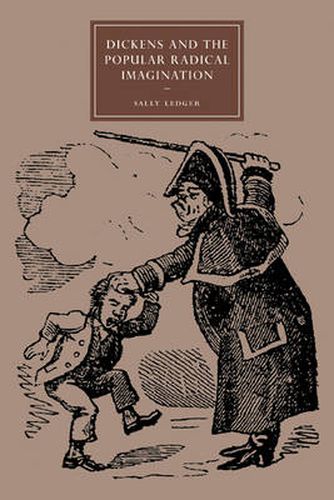Readings Newsletter
Become a Readings Member to make your shopping experience even easier.
Sign in or sign up for free!
You’re not far away from qualifying for FREE standard shipping within Australia
You’ve qualified for FREE standard shipping within Australia
The cart is loading…






The relationship between the work of Charles Dickens and popular literature has often been noted, but the extent to which his fiction and journalism were rooted in, and continued to respond to, the popular radical culture of his time had so far been unexplored. Sally Ledger traces the influence of Regency radicals, such as William Hone and William Cobbett, and mid-century radical writers, such as Douglas Jerrold and the Chartists Ernest Jones and G. W. M. Reynolds. She offers substantial readings of works from Pickwick to Little Dorrit, arguing that Dickens’s populism bridged eighteenth- and nineteenth-century conceptions of the ‘popular’, the first identified with the political idea of ‘the People’, the second identified with a mass-market ‘populace’ that emerged during Dickens’s career. Richly illustrated, this study also uncovers the resonance between Dickens’s writings and popular graphic art by George Cruikshank, Robert Seymour, C. J. Grant and others.
$9.00 standard shipping within Australia
FREE standard shipping within Australia for orders over $100.00
Express & International shipping calculated at checkout
The relationship between the work of Charles Dickens and popular literature has often been noted, but the extent to which his fiction and journalism were rooted in, and continued to respond to, the popular radical culture of his time had so far been unexplored. Sally Ledger traces the influence of Regency radicals, such as William Hone and William Cobbett, and mid-century radical writers, such as Douglas Jerrold and the Chartists Ernest Jones and G. W. M. Reynolds. She offers substantial readings of works from Pickwick to Little Dorrit, arguing that Dickens’s populism bridged eighteenth- and nineteenth-century conceptions of the ‘popular’, the first identified with the political idea of ‘the People’, the second identified with a mass-market ‘populace’ that emerged during Dickens’s career. Richly illustrated, this study also uncovers the resonance between Dickens’s writings and popular graphic art by George Cruikshank, Robert Seymour, C. J. Grant and others.